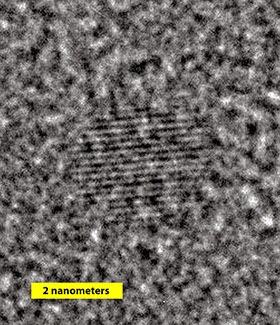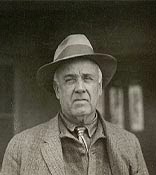In the second installment of the 'Dark God's Gift: A Great Uncle's Legacy; Dr. Sybil Perth's unexpected car trouble in the middle of the Nevada Desert has met with good fortune. Her vehicle is being looked after and a kindly couple has taken her in for the night, but the solemn warning by one of her hosts to leave has fallen on deaf ears. The growing mystery surrounding the tiny community is far too intriguing for Dr. Perth to ignore....
All Posts (6509)
Print Books Outsold Ebooks the First Half of 2014
Fans of print books, who have long lived in fear that their neighborhood bookstore will be rendered obsolete by the ubiquity of ebooks in a matter of years, can take comfort in new numbers from Nielsen Books & Consumer showing that ebooks were outsold by both hardcovers and paperbacks in the first half of 2014.
According to Nielsen’s survey, ebooks constituted only 23 percent of unit sales for the first six months of the year, while hardcovers made up 25 percent and paperback 42 percent of sales. In other words, not only did overall print book sales, at 67 percent of the market, outpace ebook sales, both hardcovers and paperbacks individually outsold ebooks.
Given the explosive growth of ebook sales since the launch of the Kindle in 2007, with increases in the triple digits for several years, many expected the paper book industry to remain in retreat for the foreseeable future. Recently, however, ebook gains seem to have stabilized with hardcover and paperback books still comfortably dominant. In 2013, sales growth for ebooks slowed to single digits, and the new numbers from Nielsen suggest the leveling off was no anomaly.
At Electric Literature, Lincoln Michel theorizes that this anticipates a future in which paper books and ebooks will coexist peacefully. This hope was also expressed to Publishers Weekly last year by industry insiders, including Perseus Books Group CEO David Steinberger, who commented that: "A healthy, diverse marketplace with multiple format, price point, and channel choices for the consumer is generally a positive for readers, authors, and publishers overall.”
Author Stephen King told HuffPost Live recently that he also believes print books have a long and bright future ahead of them, saying, "I think books are going to be there for a long, long time to come." King compares books' prospects positively with those of CDs and vinyl."[A]udio recordings of music have only been around for, I'm going to say, 120 years at the most," he said. "Books have been around for three, four centuries ... There's a deeply implanted desire and understanding and wanting of books that isn't there with music."
This continuing variety in format doesn’t only appeal to choice-conscious consumers. It may be a boon for those worried about the possible downsides of ereading, given growing, though still preliminary, evidence that print books may allow for deeper reading and stronger understanding and memory than digital books. Advocates of more engaged reading have often warned that the increasing omnipresence of ereading might erode our capacity to read deeply.
If the new trends continue, such warnings of the death of print books, and their potential benefits, may prove to have been greatly exaggerated.
 |
| Source: Famous Scientists link below |
Filipino scientist Benjamin Cabrera is one person that really deserves a pat on the back because not only is he a physician but he is also known for his works on public health and medical parasitology. He is a scientist that never seems to run out of ideas and uses his brain to bring advances solutions to problems. He has had a lot of achievements and while most of the have been significant, there are some works of his that just really stand out and are still significant and in use up until today. He boasts more than a hundred scientific publications to his name. His specialties were focused on public health and parasitology and this is where he did a lot of work and introduced a lot of breakthroughs in. It is important to note that he made his discoveries and breakthroughs during a time when technology wasn't yet too advanced and yet he managed and excelled and made some of the most ground-breaking breakthroughs and innovations in his chosen field and specialty.
Dr. Cabrera was quite prolific and published more than a hundred studies that on medical parasitology and public health. Not only did he write and publish his findings but he also made some very important innovations that changed the way diseases from mosquitoes were treated. He also made headway into developing treatments for parasite-infested agricultural soil. Seeing as his native country relied heavily in agriculture, his findings and innovations brought a lot of benefits to his homeland and alleviate a lot of their problems with land and parasites.
11 years after he graduated with his Master’s Degree, he and a certain Lee M. Howard conducted the very first study that focused on simian malaria. The study was conducted in the Philippines where they found that 8.6% of the animals they tested had malaria. The study was admittedly somewhat limited but it did show significant findings and suggested that the cases of simian malaria weren’t really all that significant and didn’t pose a real threat to the Filipino population.
His works were all significant but one stood out above the rest and it was about the study he conducted on filariasis which is an infectious and parasitic tropical disease that is brought about by infestations of thread-like nematode worms that belong to the Filariodea family. Dr, Cabrera’s work on this tropical disease is what garnered him the Philippine Legion of Honor which was a Presidential Award back in the year 1996.
Famous Scientists: Benjamin Cabrera, PhD
 |
| The full Moon as seen from the Earth, with the Procellarum border structure superimposed in red |
Scientists have identified a huge rectangular feature on the Moon that is buried just below the surface.
The 2,500km-wide structure is believed to be the remains of old rift valleys that later became filled with lava.
Centered on the Moon's Procellarum region, the feature is really only evident in gravity maps acquired by Nasa's Grail mission in 2012.
But knowing now of its existence, it is possible to trace the giant rectangle's subtle outline even in ordinary photos.
Mare Frigoris, for example, a long-recognized dark stripe on the lunar surface, is evidently an edge to the ancient rift system.
"It's really amazing how big this feature is," says Prof Jeffery Andrews-Hanna.
"It covers about 17% of the surface of the Moon. And if you think about that in terms relative to the size of the Earth, it covers an area equivalent to North America, Europe and Asia combined," the Colorado School of Mines scientist told BBC News.
BBC News: Moon's hidden valley system revealed, Jonathan Amos
 |
| "Buy N Earn." More about the company logo, mission, vision and core beliefs here. |
Almedah Food Machineries Corporation has its humble beginnings in 1954 when Mr. Benjamin G. Almeda, Sr., founded the Almeda Cottage Industry which manufactured then his basic food processing inventions like Rice Grinder, Meat Grinder and Coconut Grater. Aside from Mr. Almeda’s inherent talent for original designs and inventions, he has the social driving vision of putting up a business which puts other people in business. For all of these he earned the title of Father of the Filipino Inventors and other prestigious awards.
Almeda Cottage Industry products could be found in the entire stretch of our nation from north to south. In the public markets, restaurants, school canteens, food stalls and even in households further attesting to its social motto of “OUR BUSINESS PUTS PEOPLE IN BUSINESS”. This time, most visible are the Ice Crushers, Grinders, Shredders, Hamburger Grills, Hotdog Rollers, Waffle Cookers and Bibingka Ovens.\r\n\r\nWith the boom of Food Industry in the latter part of 80’s and the subsequent change in the eating habits of the Filipinos, it became imperative that new strategies and more efficient approach to processing and preparation of food derivatives be employed. This saw the influx of foreign based food companies bringing in the latest and technologically advance food machineries. As a natural consequence, the local entrepreneurs in food business sourced their equipments from these foreign companies notwithstanding the high cost of the equipments, the duties and taxes of importation and the problem of post sales service and availability of parts. This natural phenomenon happened not because of prejudice for equipments that are locally made but because there is just no manufacturing company in the Philippines that is technologically capable of the more demanding needs of these boom in Food Industry.
As a consequence, Carlos, the youngest son of Mr. Almeda, came in the forefront of the family business to meet the demands and challenges of the modern technologies, proving once more that a Filipino can compete in the global demands of Food Industry. In October 1986, Mr. Benjamin G. Almeda who was 76 years old by then, finally relinquished full control of Almeda Cottage Industry to Carlos, who was by then a young physician by profession. He was given preference over his older brothers who were all engineers by profession because he showed sincere concern for the family business and his natural and inborn technological talents and marketing savvy inspite of the demands of his profession as a physician. With his assumption, possessing an uncanny ability for designing equipment that would put professional engineers to shame and coupled with a passion for excellence and a natural feel for market forces, he embued in the company a spirit of dynamism and unflinching competitiveness. In order to attain accuracy and precision, he bought computerized machineries for design and manufacturing, the same kind that were used by his foreign based competitors. These bold and ambitious steps and undertakings propelled the company back on the road to regaining the lead in the manufacture of food processing equipments which ALMEDAH FOOD MACHINERIES CORP. is today. Without discarding any of its original products and equipments, he added not only new line of specialty equipments but also complete manufacturing system for food industry. What used to be a monopoly of foreign based companies found an unwavering local competition.
Almedah Food Machineries: Benjamin Almedah, inventor and founder
 |
| Source: Technology Review link immediately follows |
TECHNOLOGY REVIEW: Hydrogen is a potential renewable fuel because it can easily be generated from water using electrolysis. It also burns cleanly to produce water vapour. The hope is that it could also be distributed using the same global network of liquid fuel transport that moves petrol around the planet.
But there numerous problems with this dream of a hydrogen-based economy. One of them is that hydrogen is difficult to store efficiently. Hydrogen gas has a poor energy density by volume compared to petrol. In fact, there is at least 60 percent more hydrogen in a litre of gasoline then there is in a litre of pure liquid hydrogen. In other words, hydrogen will always require bigger tanks.
So finding ways to store more of it is a huge challenge. One option is to store it as a liquid but hydrogen boils temperatures above -250 degrees centigrade and so requires bulky insulation to keep it in this state.
Another idea is to compress it. But this raises issues of safety should a hydrogen-fuelled car be involved in a collision.
That is why much of the material science research in this area has focused on chemical storage: finding materials that adsorb hydrogen efficiently and then release it again when it is required.
Now Viney Dixit and buddies at the Hydrogen Energy Center of Banaras Hindu University in India say they have discovered that carbonised coconut flesh is particularly good at this task. Today, they show that it outperforms a number of other hydrogen storage materials, particularly in its ability to work over many charging cycles.
Physics arXiv:
Hydrogen Storage In Carbon Derived From Solid Endosperm Of Coconut
Viney Dixit, Ashish Bhatnagar, R. R. Shahi, T. P. Yadav, O. N. Srivastava
In William Hayashi's 'DARK GOD'S GIFT: A Great Uncle's Legacy', Dr. Sybil Perth takes an impromptu night time drive through the Nevada Desert. Unexpected car trouble forces her to stop in a small community until repairs can be made. The good Dr. soon finds the friendly folks in town harbor a strange secret in the isolated town. Dr. Perth's curiosity is peaked, but will caution win out before she is drawn into the mystery?
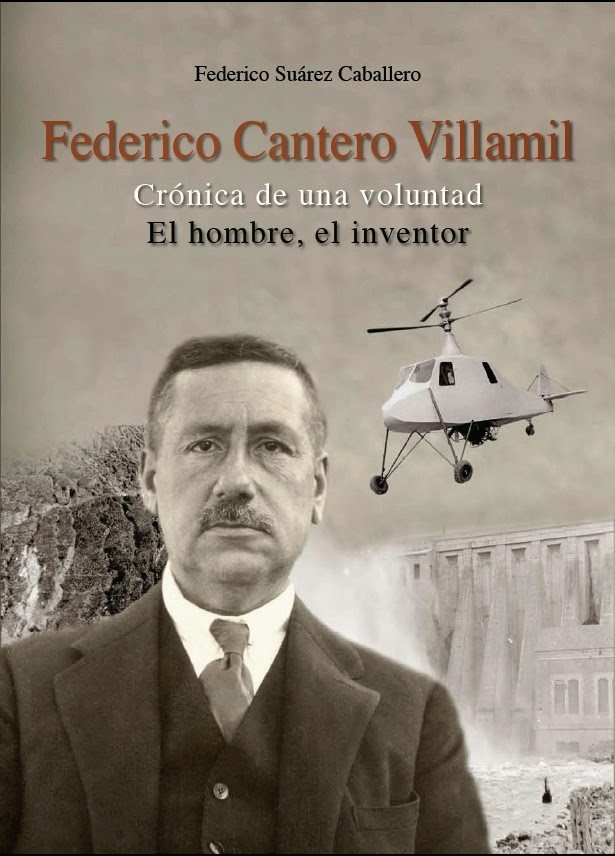 |
| Image Source |
Federico Cantero Villamil (Madrid, 22 June 1874 - 1946) was a Spanish civil engineer known for the dams he constructed and planned along the river Duero and for his research on the aeronautical field, which is summarized in the Libélula española, a helicopter constructed by him.
His parents were the civil engineer Federico Cantero Seirullo and Isabel Villamil Olivares. He married Tránsito Cid, and they had two children. A few years later she died. Later, Cantero married Concepción García-Arenal Winter, a granddaughter of Concepción Arenal, and they had six children.
He became an engineer 30 September 1896, with the first mark. He did his working practice during 1897 in Zamora, and in 1900 he began to work at the "Jefatura de Obras Públicas de Zamora". In May 1900 he asked and obtained a leave in order to work in hydraulics. At that moment, the governments of Spain and Portugal were planning how to exploit the hydroelectric potential of the river Duero.
In 1899 founds the society "El porvenir de Zamora" (The Prospect of Zamora), with the aim of funding and exploiting the dam of San Roman, near Zamora. Its construction lasted until 1903. This dam took profit of a "hoz" (meander) of river Duero that was 11.2 km. long. He opened a tunnel 1.5 km. long and built up the turbines and engines at the other side. By means of this, the unevenness from the reservoir to the turbines measured 14 meters, while the height of the dam was only 5 meters.
Although Cantero's main work was that of the dams, since 1908 he was patenting other inventions in the field of aeronautics. His main interest was the problem of flight. It is in 1910 when he patented an ...idea to hold bodies in the air, and, if wanted, propulsion. Thirty-four patents followed the first one, being the last ones devoted to the helicopter he constructed: the Libélula española.
Wikipedia: Federico Cantero Villamil, inventor
Sequestration...it seems a lifetime ago the government was "shutdown," $24 billion tax payer dollars (read: yours and mine) defecated to the winds and, sociopathic politicians that caused it posing in front of cameras and veterans memorials as if they hadn't. Bereft in the back-and-forth finger-pointing was an appreciation for The Scientific Method* and critical thinking skills when they are promoted.
* Problem - Research - Hypothesis - Test Hypothesis - Data Analysis - Conclusion - Retest
Problem: Government (supposedly a "collectivist conspiracy" from those other Founding Fathers).
Research: Milton Friedman et al, see "Seven Bad Ideas" by Jeff Madrick.
Hypothesis - Libertarian philosophies encapsulated by Ayn Rand and Grover Norquist:"My goal is to cut government in half in twenty-five years, to get it down to the size where we can drown it in the bathtub." We The People await with baited breath (in said bathtub) the omnipotent, invisible hand of the deified "Free Market" to cure all ills.
Test Hypothesis: They came (2010); they saw (2011 - 2012); they sequestered (2013), outside of any rational beings' natural minds and common sense.
Data Analysis - As illustrative points-of-fact:
- It has been suggested that the sequester left the Secret Service at less than optimum levels. I'd say < ~500 agents is leaning heavily in that direction.
- This resulted in Defense Department Force-Level cuts, a "good" thing to do with the rise of ISIS/ISIL (sarcasm).
- It negatively impacted Department of Defense Schools, i.e. the schools our men and women in the armed forces enroll their children in while they fight for this nation in our name. Supporting the troops...
- Our public schools started this year with reading, writing, arithmetic and budget cuts, or to everyone else, less teachers and more pupils - classroom Nirvana, I'm sure.
- This impacted negatively inner-city youth, poor and special needs in all demographics.
- Our scientific research and overall global competitiveness is suffering.
- The CDC points to it as eroding their response to the Ebola epidemic in Africa and the US. See also here and here.
- Harvard Law gives a list of impact areas (it sounds like I'm discussing craters from meteors or missiles, but the analogy is not too far off): Medicare; FDA (ahem: how we eat safely); the CDC cut by $490 million; the NIH cut by $2.5 billion; ACA programs in prevention and public healthcare.
Conclusion: #2014TheDayofReckoning, 4 November, we shall see what kind of democratic republic we really are.
Retest: Eh, do you really want to?
There are many good writers, graphic artists, animators, and other creative people of color who need our support. Using their craft, they tell our stories. Art can influence the fate of our communities. Science Fiction and Fantasy can change the world.
So, this is what we must do.
Google Black Science Fiction and Fantasy. Go to Amazon and Smashwords and other venues for ebooks. Purchase. Write a review (4 stars or 2 stars). Tell your friends on Facebook and Twitter about what you have read.
Get involved because October 2014 is Black Speculative Fiction Month! The dreams can become reality.
Believe. Create. Accomplish.
Thank you.
 |
| Astronaut Fernando (Frank) Caldeiro poses in front of the orbiter Discovery |
FERNANDO (FRANK) CALDEIRO
NASA ASTRONAUT (DECEASED)
PERSONAL DATA: Born June 12, 1958 in Buenos Aires, Argentina, but considered New York City and Merritt Island, Florida, to be his hometowns. He died on October 3, 2009 following a 2-1/2 year battle with a brain tumor. He is survived by his wife, the former Donna Marie Emero of Huntington Beach, California, and two daughters.
EDUCATION: Graduated from W.C. Bryant High School, Long Island City, New York, in 1976; received an associate degree in applied science in Aerospace Technology from the State University of New York at Farmingdale in 1978, a bachelor of science degree in mechanical engineering from the University of Arizona in 1984, and a master of science degree in engineering management from the University of Central Florida in 1995.
ORGANIZATIONS: Experimental Aircraft Association, Aircraft Owners and Pilots Association.
AWARDS: Kennedy Space Center (KSC) Technical Leadership Certificate; Rockwell International Corp. Certificate of Commendation; Group Achievement Awards (9); KSC Center Director Round Table Award; KSC Superior Performance Awards (2); KSC Public Affairs Certificate of Appreciation for Service. University of Central Florida Distinguished Alummni, 2001 Tampa’s Museum of Science and Industry Hispanic Scientist of the Year. Appointed in 2002 by President G. W. Bush to serve in the President’s Advisory Commission on Educational Excellence for Hispanic Americans under the President’s “No Child Left Behind Act”.
EXPERIENCE: From 1985-1988, Caldeiro worked as a test director during the production and flight test of the Rockwell/USAF B-1B Bomber. In that capacity he was involved in the checkout and delivery of all 100 aircraft. In 1988, he was transferred by Rockwell International to the Kennedy Space Center as a space shuttle main propulsion system specialist. In this capacity he was the Rockwell International design center representative for the ground processing and launch of the Orbiter Discovery.
NASA: Fernando "Frank" Caldeiro, astronaut
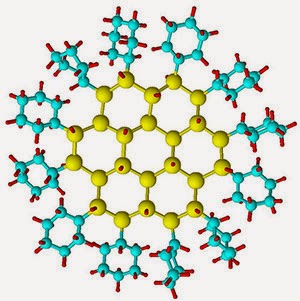 |
At left, a structural model of a typical silicon nanocrystal (yellow) stabilized within an organic shell of cyclohexane (blue). At right, a high-resolution transmission electron microscope photograph of a single silicon nanoparticle.
Credit: NIST
If it's true that good things come in small packages, then the National Institute of Standards and Technology (NIST) can now make anyone working with nanoparticles very happy. NIST recently issued Reference Material (RM) 8027, the smallest known reference material ever created for validating measurements of these man-made, ultrafine particles between 1 and 100 nanometers (billionths of a meter) in size.
RM 8027 consists of five hermetically sealed ampoules containing one milliliter of silicon nanoparticles—all certified to be close to 2 nanometers in diameter—suspended in toluene. To yield the appropriate sizes for the new RM, the nanocrystals are etched from a silicon wafer, separated using ultrasound and then stabilized within an organic shell. Particle size and chemical composition are determined by dynamic light scattering, analytical centrifugation, electron microscopy and inductively coupled plasma mass spectrometry (ICP-MS), a powerful technique that can measure elements at concentrations as low as several parts per billion.
NIST: World’s Smallest Reference Material is Big Plus for Nanotechnology
Michael E. Newman
Monday, October 6th the DARK GOD'S GIFT continues with Sci-fi Author and Genesis Radio Host, William Hayashi's 'DARK GOD'S GIFT: A Great Uncle's Legacy'. Somewhere deep in the Las Vegas Desert, a lone traveler has car trouble and stops in a small community only to be drawn into a strange phenomenon affecting the lives those who live there. The traveler's decision to stay or move on will not only affect the locals, but the entire world!
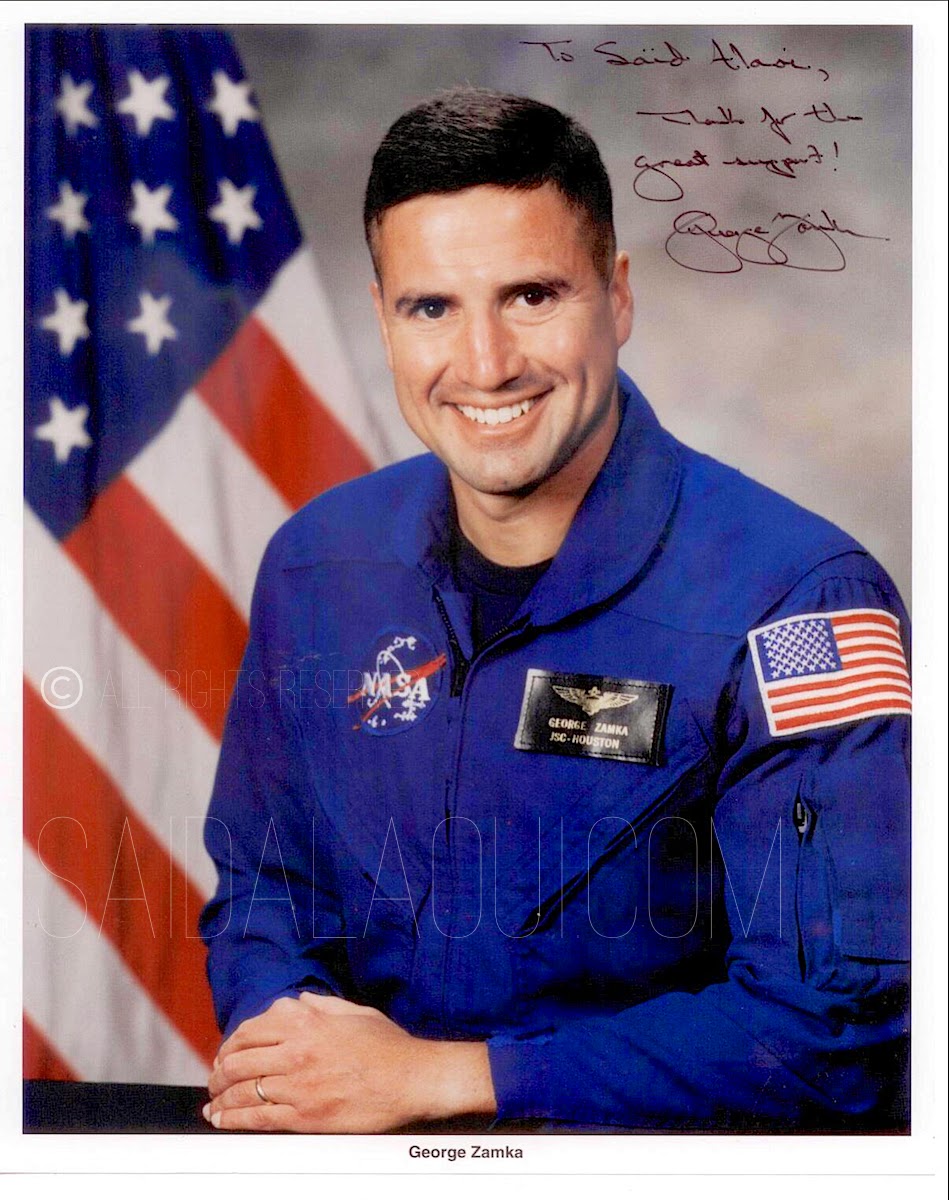.jpg) |
| Astronaut Testimonials |
GEORGE D. ZAMKA (COLONEL, USMC, RET.)
NASA ASTRONAUT (FORMER)
PERSONAL DATA: Born in 1962 in Jersey City, New Jersey. Raised in New York City; Irvington, New York; Medellin, Colombia; and Rochester Hills, Michigan. Married to the former Elisa P. Walker of Mississippi; they have two children. He enjoys weightlifting, running, bicycling, scuba diving and boating. His mother, Sofia Zamka, and brother, Conrad P. Zamka, both live in Florida. His father, Conrad Zamka, resides in Indiana.
EDUCATION: Graduated from Rochester Adams High School, Rochester Hills, Michigan, in 1980. Received a Bachelor of Science degree in Mathematics from the United States Naval Academy in 1984; received a Master of Science degree in Engineering Management from the Florida Institute of Technology in 1997.
ORGANIZATIONS: Association of Space Explorers, United States Naval Academy Alumni Association, Marine Corps Association and Marine Corps Aviation Association.
SPECIAL HONORS: NASA Space Flight Medal (two), NASA Outstanding Leadership Medal, Legion of Merit, Distinguished Flying Cross, Defense Meritorious Service Medal, Meritorious Service Medal, Navy Strike Air Medal (six), Navy Commendation Medal with Combat V and various other military service and campaign awards. Distinguished Graduate, United States Naval Academy. Commodore’s list and Academic Achievement Award, Training Air Wing Five. Awarded the Officer’s Cross of the Order of Merit of the Republic of Poland.
EXPERIENCE: Zamka was commissioned as a second lieutenant in the United States Marine Corps after graduating from the United States Naval Academy in May 1984. After basic flight training, he was trained as an A-6E pilot at Whidbey Island, Washington, from 1987 to 1988. He then flew with Marine All Weather Attack Squadron VMA(AW)-242 in El Toro, California. He served in administration and flight safety roles and also as squadron weapons and tactics instructor. In 1990, he trained to be an F/A-18 pilot and was assigned to Marine All Weather Fighter Attack Squadron VMFA(AW)-121, also in El Toro. He flew the F/A-18D Night Attack Hornet during overseas deployments to Japan, Korea, Singapore and Southwest Asia. Zamka flew 66 combat missions over occupied Kuwait and Iraq during Desert Storm. In 1993, he served with 1st Battalion, 5th Marines in Camp Pendleton, California, and the 31st Marine Expeditionary Unit in the Western Pacific. He was selected to attend the United States Air Force Test Pilot School class 94A and graduated in December 1994. Zamka was then assigned as an F/A-18 test pilot/project officer and the F/A-18 operations officer for the Naval Strike Aircraft Test Squadron (NSATS). While assigned to NSATS, Zamka flew a wide variety of tests in the F/A-18 Hornet, including high angle of attack, loads, flutter, crew equipment and weapon system programs. Zamka returned to VMFA(AW)-121 in 1998 and was serving as the aircraft maintenance officer deployed to Iwakuni, Japan, when he was selected for the astronaut program. Colonel Zamka retired from the Marine Corps in August 2010.
He has logged more than 5,000 flight hours in more than 30 different aircraft.
NASA EXPERIENCE: Selected as a pilot by NASA in June 1998, Zamka reported for astronaut candidate training in August 1998. He has served in various technical and leadership roles in the Astronaut Office, including space rendezvous and proximity operations, landing and rollout instructor and lead for shuttle systems within the Shuttle Operations Branch. Zamka served as lead for the Shuttle Training and Procedures Division and as supervisor for the astronaut candidate class of 2004. In 2007, he completed his first spaceflight as pilot on STS-120. For his second spaceflight, Zamka commanded the crew of STS-130, which flew in February 2010. Colonel Zamka has logged more than 692 hours in space. In March 2013, Zamka retired from NASA. He is now serving as the Deputy Associate Administrator, Federal Aviation Administration, for Commercial Space Transportation.
NASA: George D. Zamka, Colonel, USMC, astronaut, retired
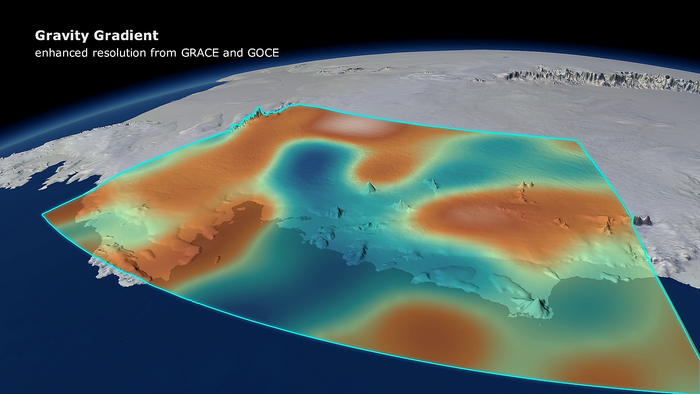 |
| Source: ESA GOCE |
GOCE stands for "Gravity Field and Steady-State Ocean Circulation Explorer." It's not an acronym I know off the top of my head, either.
The physics definition: "the force that attracts a body toward the center of the earth, or toward any other physical body having mass. For most purposes Newton's laws of gravity apply, with minor modifications to take the general theory of relativity into account."
Penguins are not flying off into orbit, and I hope the news doesn't do its usual bit of sensationalism for ratings - why, for the most part I've given up looking too much at the news and prefer to read summaries off the Internet - from other countries.
This IS a data point, and an important one. It means climate change can be measured not just in temperature or change in weather patterns.
From one of the articles (GOCE):
Scientists are now armed with the most accurate gravity model ever produced. This is leading to a much better understanding of many facets of our planet – from the boundary between Earth’s crust and upper mantle to the density of the upper atmosphere.
The strength of gravity at Earth’s surface varies subtly from place to place owing to factors such as the planet’s rotation and the position of mountains and ocean trenches.
Changes in the mass of large ice sheets can also cause small local variations in gravity. [1]
It will be useful information we can use in the exploration of other worlds, some in our own solar system's backyard.
Discovery ended on a somber note:
The news doesn't get much better for Antarctica. Earlier this year, two studies were released that indicated the West Antarctic Ice Sheet is headed for an irreversible collapse in roughly 200 years. Should the ice sheet completely collapse, scientists believe it could raise sea level by more than 10 feet. [2]
Bye-bye Florida in the 23rd century. Considering it's where we have traditionally launched space vehicles, that would be fairly unfortunate, especially for the Floridians!
1. GOCE: GOCE reveals gravity dip from ice loss
2. Discover: Antarctic Ice Melt is Changing Earth’s Gravity, Carl Engelking
Agent Thia Wayan's covert mission has hit a major snag. Instead of attempting to dominate the criminal underworld, due to strange powers granted by the mysterious jeweled artifact her target now has political aims! To keep in the Thug's good graces, Thia hatches a bold plan to support her target's political aspirations. However, it's going to need a little money to get off the ground....
If you're attending MIZUCON this weekend, be sure to stop by the Dapper 13 tattoo studio! I'll be on hand, prepping custom tattoo flashes, and taking weekly appointments.
Or, if you just want to commission so art, I'll be on hand for that too!
 |
| Images Source: Smithsonian Education |
The Ochoa Plane
Ochoa's machine is made of a framework of steel spring and steel tubing which he has contrived to put together in such a manner that it can be folded by working a lever. Over the framework is stretched a canvas covering. The plane is about twenty-six feet wide and the machine measures from front to back only six feet. The rear rudder is similar to a bird's tail.
The whole arrangement is mounted upon two bicycle frames whose wheels form the groundwork of the aeroplane. Between the bicycle frames, the inventor has mounted a six-horse power motor, below which he has placed a seat for the operator. The whole machine weighs about 250 pounds.
The inventor has been working upon this aeroplane more than twenty years, and during that time has succeeded in putting together several machines that operated successfully for short distances. The first fruit of his labors was a marvelously accurate reproduction of a bird with six wings. With this he believed he had solved the problem of aerial flight. His earliest models, propelled by clockwork, flew with remarkable stability.
He also invented an adjustable wrench, electric brake, pen and pencil clip, reversible motor and windmill. He apparently also was a revolutionary with a $50,000 dead-or-alive price on his head. Quite a guy!
Smithsonian Education: Victor Ochoa Mexican inventor
 |
| From Planet X - kind of reminded me of "The Time Tunnel" (dating myself) |
CERN, Europe’s particle-physics laboratory and the place famous most recently for the discovery of the Higgs boson, is celebrating its sixtieth birthday today (actually 29 September).
The name CERN originally was the French acronym for Conseil Européen pour la Recherche Nucléaire, or European Council for Nuclear Research, and its convention officially came into force on 29 September 1954. In the wake of a war that had torn the continent apart, a small group of scientists and policy-makers created CERN in an attempt to use fundamental research to reunite Europe.
From 12 founding members, the organization has today grown to 21 states, with scientists at the lab hailing from almost 100 countries around the globe.
While CERN hosts a celebration at its home near Geneva, Switzerland, Nature looks back at some of the lab’s most significant moments from the past six decades.
Some excerpts from the timeline:
1983: CERN’s 6.9-kilometre-long Super Proton Synchrotron (SPS) discovers the particle carriers of the weak force, the W and Z bosons.
1989: CERN computer scientist Tim Berners-Lee’s drafts a paper outlining plans for an information-management system, which at the time he termed “the mesh” but which later becomes known as the World Wide Web. Berners-Lee’s boss, Mike Sendall, famously replies that the proposal was “vague, but exciting”, giving Berners-Lee the green light for development. The world’s first web page address is born the following year (this copy is from 1992).
2012: On 4 July scientists at the LHC’s ATLAS and CMS experiments announce that they have found a clear signal of the Higgs boson, and reporter Geoff Brumfiel records the moment in a live blog (and later in an article). The announcement, made by the ATLAS and CMS experiments, causes waves around the world, and in 2013 earns theoretical physicists François Englert and Peter Higgs the Nobel Prize in Physics for their prediction of the mechanism.
Nature News Blog: CERN at 60: Biggest moments at flagship physics lab, Elizabeth Gibney
The Dark God's Gift continues in 'A Tangled Web' Pt. II. Agent Thia Wayan's cover as an Asian Mobster's wife is holding well, too well! As she goes deep into the Triad's inner-circle the Big Boss of the Dragon Triad has taken an 'interest' in the lovely agent. If she didn't have enough problems, the Boss receives a strange jeweled gift Agent Wayan believes could be far more dangerous than the gang themselves!

